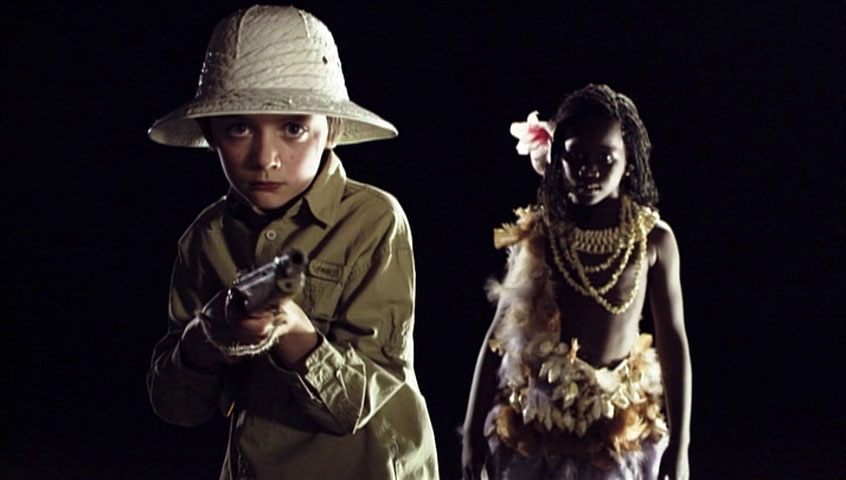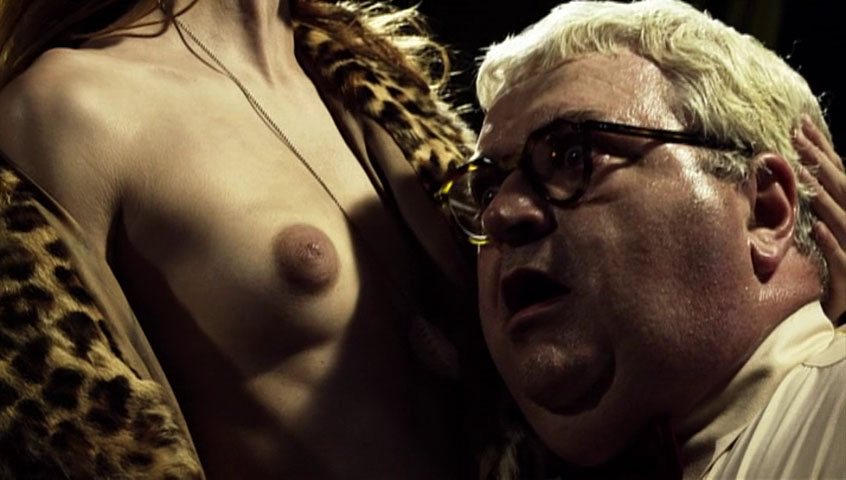In a Lynch mood, rounding up some pieces I hadn’t seen, or not lately.
–
Fictitious Anacin Commercial (1967)
A one-minute lark, man in a rural jump-cut rocking chair (next to a bloody sack or dress) has a headache, the anacin gets him up dancing again. Big music, some weird slo-mo, and Jack Fisk is obviously the man.

–
BlueBob Egg (2004)
Not gonna count this as a movie, it’s a single take of a dude in a mask getting arrested. No BlueBob music included. Web video from the old site?

–
I Touch a Red Button (2011)
He certainly does touch a red button – that’s about all he does, more or less to the beat of a good Interpol song I don’t recognize, from when I lost track of them post-Antics. Animated character, just three or four frames, with manic camera blur. The title hangs above the little long-nosed button-smashing guy the entire time. Pretty great, honestly.

–
Lamp (2003)
Making the colored based of a two-toned yellow and grey lamp
Discussed: lunch, coffee, pissing in the sink
There’s a score, a light beat.
“future home of Disc of Sorrow” sign is visible.

–
Idem Paris (2013)
I’ve seen this before, endlessly watchable mini-doc of the men and machinery making a series of prints of one of Lynch’s artworks.

–
Ant Head (2018)
Not the head of an ant, but a head covered in ants, scored by some good noise music. The head is composited onto a still background of power lines, the edges matted off so ants walking over the top side vanish into the background. At the end the image reverses and slowly zooms in, a little radio play monologue about Pete vs. the woodcutters. Based on a Thought Gang song that was based on a cancelled Twin Peaks video game sequel.

–
The Spider and the Bee (2020)
A pretty long time to spend in a spider web, but the shadow of the lead characters (the spider wins) and the light off the web held my attention. Some light ambient music, and best of all is the sound effects, not just assigned to the creatures, but also the camera moves.

–
David Lynch: The Art Life (2016, Barnes & Nguyen & Neergaard-Holm)
Nice little doc about Lynch’s history and art career, as told by the man himself. Got inspired to watch this after Lamp, which I still slightly prefer, though this is obvs valuable and got a standalone Criterion blu release, so what do I know. Sync sound is rare, swearing is common. Real Blue Velvet vibes when he talks about living three different lives at once during high school and tells a story of an upset naked woman walking down his street one night. Surprised to hear him say Philadelphia was really good for him. After The Alphabet, David got a day job at a printer – he likes printers (see Idem Paris) but hates day jobs – then won an AFI grant, made The Grandmother in their apartment, AFI people helped him get into an advanced filmmaking program in L.A. where he made Eraserhead.








































